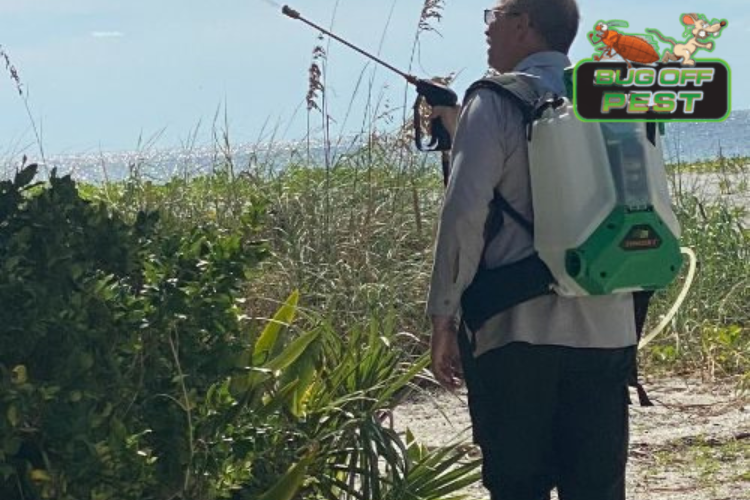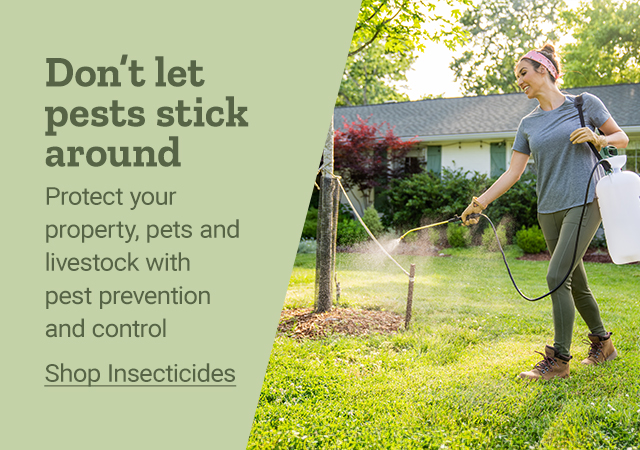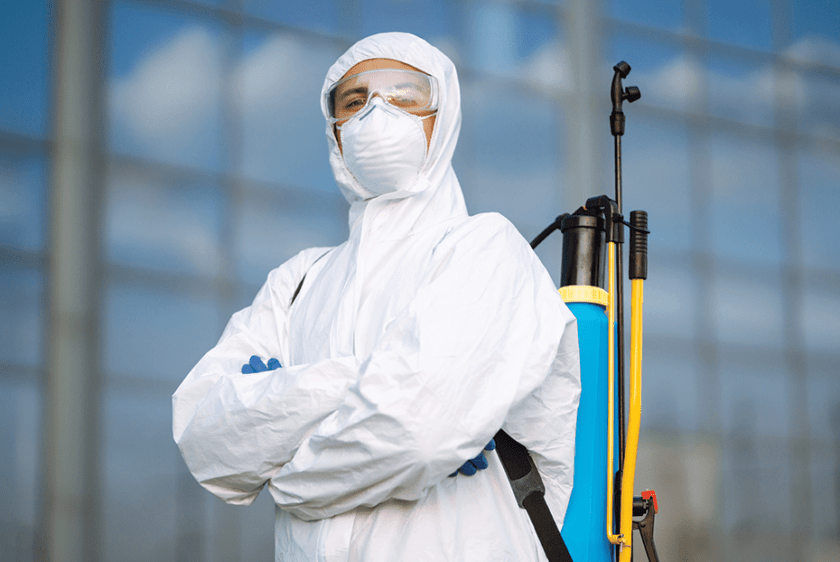Affordable and Trusted Exterminator in Port Charlotte for All Your Needs
Discover the most up to date Advancements in Pest Control and Exactly How to Implement Efficient Treatment Solutions
In current years, the field of parasite control has actually witnessed significant developments, driven by the need for reliable and sustainable therapy services. Ingenious strategies such as Integrated Bug Monitoring (IPM) incorporate environmentally friendly techniques with innovative technology, improving both effectiveness and ecological responsibility.
Eco-Friendly Bug Control Options
In the last few years, the need for eco-friendly parasite control alternatives has actually risen as house owners and services alike look for sustainable alternatives to traditional chemical treatments. This shift is driven by growing environmental recognition and a wish to reduce the wellness threats connected with synthetic chemicals.

Green insect control approaches include a series of techniques that prioritize the usage of all-natural substances and practices. Integrated Bug Management (IPM) is one such method, combining biological, social, and mechanical strategies to handle bug populations while minimizing reliance on chemicals (Wildlife removal services). This alternative method highlights avoidance with habitat manipulation and the intro of all-natural predators, thereby cultivating a well balanced community
Another popular alternative is making use of agricultural chemicals stemmed from plants, which have a tendency to be less hazardous to non-target organisms. Products like neem oil and diatomaceous earth have gained grip for their efficiency in controlling bugs while presenting very little threats to human health and wellness and the atmosphere.
In addition, exclusion methods, such as securing entrance factors and preserving cleanliness, play a vital function in environmentally friendly parasite administration. By embracing these lasting practices, people and companies can successfully manage bugs while advertising a healthier planet for future generations.
Smart Technology in Parasite Administration
Technology is reshaping the landscape of pest monitoring, with clever technology emerging as a critical pressure in boosting effectiveness and efficiency - Wildlife removal services. The assimilation of Internet of Points (IoT) tools, fabricated knowledge (AI), and information analytics is changing exactly how pest control experts approach problems
Smart traps outfitted with sensing units can spot parasite activity in real-time, sending immediate alerts to drivers. This enables timely actions, reducing damages and lowering the need for extensive therapies. Additionally, AI algorithms evaluate historic data to predict pest behavior, enabling proactive interventions based on environmental problems and invasion patterns.
Drones and automatic automobiles are likewise playing a significant role in pest administration, giving airborne analyses of huge locations, recognizing hotspots, and even dispersing targeted therapies. These modern technologies not only improve operations however likewise enhance safety and security by limiting human exposure to potentially unsafe chemicals.
Furthermore, mobile applications equip consumers to monitor bug task and gain access to professional advice, cultivating a joint method to pest management. Overall, the adoption of clever modern technology is setting a brand-new standard in insect control, emphasizing data-driven decisions and sustainable techniques that ultimately profit both specialists and home owners alike.
Integrated Parasite Monitoring Methods
Integrated Insect Monitoring (IPM) uses a holistic approach to pest control, incorporating numerous approaches to effectively take care of parasite populations while lessening threats to human health and the setting. IPM focuses on recognizing the pest life process, their all-natural enemies, and the ecological community in which they thrive.
One of the essential parts of IPM is monitoring pest populations through normal evaluations and data collection. This permits the recognition of find pest control pest thresholds, determining when treatment is essential. Cultural techniques, such as crop turning, sanitation, and habitat manipulation, are vital in reducing parasite occurrence and promoting plant health.
Mechanical controls, consisting of traps and barriers, are also important in IPM. These techniques can physically eliminate or prevent insects without the use of chemicals. When necessary, the judicious application of chemical controls is utilized, concentrating on targeted treatments that lessen ecological impact.
Education and learning and cooperation among stakeholders, including farmers, insect control experts, and the neighborhood, are important for the successful implementation of IPM strategies. By prioritizing sustainable methods, IPM not only addresses pest problems yet additionally promotes a much healthier ecological community.
Biological Control Methods
Many biological control methods are increasingly acknowledged for their effectiveness in handling parasite populations while promoting ecological balance. These methods harness natural killers, bloodsuckers, and pathogens to minimize pest numbers without relying upon synthetic chemicals. The introduction of ladybugs can effectively manage aphid populations, while nematodes target soil-dwelling bug larvae.
In addition, making use of microbial pesticides, such as Bacillus thuringiensis (Bt), gives an eco pleasant option for managing caterpillar insects. These items especially target pest species, reducing injury to helpful bugs and pollinators. Additionally, preservation organic control stresses boosting environments for natural adversaries, such as birds and advantageous bugs, consequently motivating their presence in agricultural systems.
Research continues to reveal ingenious techniques within this field, such as the use of pheromones to interfere with pest mating patterns or the development of biocontrol agents through genetic modification. Applying these methods can cause lasting bug monitoring methods that mitigate the dependence on chemical treatments, eventually cultivating much healthier communities. As recognition of these techniques expands, they are becoming indispensable components of integrated insect management (IPM) methods, offering an equilibrium between reliable bug control and environmental stewardship.
DIY Pest Control Solutions
As homeowners look for effective methods to tackle insect concerns, do it yourself bug control remedies have actually acquired popularity for their ease of access and cost-effectiveness. These methods encourage individuals to resolve problems utilizing readily available materials and techniques, usually without the need for expert intervention.

Furthermore, preserving correct find out here sanitation and routine inspections can protect against insect access and nesting (Wildlife removal services). Basic methods, such as sealing splits, getting rid of food sources, and decluttering, can significantly lessen pest populations. Catches, both homemade and readily offered, can additionally offer efficient solutions for monitoring and regulating specific pests like rats or insects

Final Thought
The combination of green bug control alternatives, clever innovation, and cutting-edge monitoring techniques provides a thorough technique to efficient insect administration. By accepting Integrated Pest Monitoring (IPM) and utilizing biological control approaches, along with Do it yourself remedies, lasting and accountable insect control can be attained.
Green bug control methods encompass a range of methods that prioritize the use of natural substances and practices. Integrated Bug Management (IPM) is one such method, integrating organic, cultural, and mechanical tactics to take care of insect populaces while lowering reliance on chemicals. As recognition of these strategies grows, they are coming to be important elements of incorporated bug administration (IPM) strategies, providing an equilibrium between effective pest control and environmental stewardship.
The combination of environmentally friendly insect control options, wise modern technology, and cutting-edge monitoring strategies offers an extensive method to effective bug monitoring. By accepting Integrated Bug Monitoring (IPM) and making use of biological control techniques, along with DIY services, accountable and sustainable insect control can be attained.